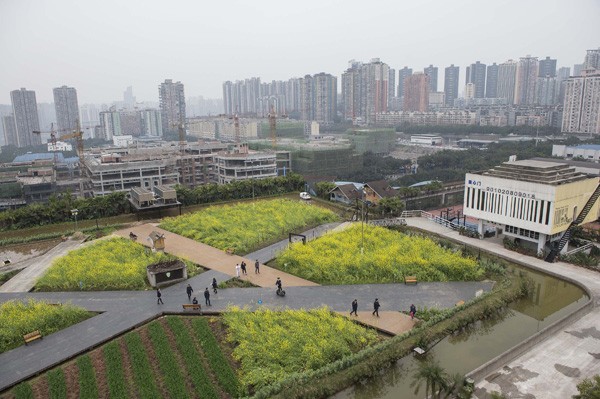Some Chinese cities are catching up with the new environmental trend quickly as more and more establishments begin to create their own “vertical greeneries” within the concrete jungle in urban areas.
In Shanghai, a newly established shopping center located along the Arch Walk boasts a hanging garden atop their building complete with green plants, trees, shrubs and flowers.
This new attraction caught the eye of several news outlets, including Xinmin Evening News, which featured the location during their most recent report, as well as Shanghai Daily commentator Li Xinran who lived a few blocks from the said establishment.
Li, who compared the mall's hanging garden to the long-gone Hanging Garden of ancient Babylon, noted how the rooftop greenery contains peach and palm trees, and Japanese arrowwood and rose bushes as well as some other plants he did not recognize.
Li explained in his article in Shanghai Daily that this mall is only one spot at the 2.2-million-square-meter "vertical greenery" in Shanghai that has transformed rooftops, balconies and windowsills into a make-shift garden.
Aside from lowering the temperature by as much as 0.6 degrees Celsius during summertime, these hanging gardens and make-shift greeneries are expected to cut carbon dioxide emissions by about 33.8 tons, all the while saving 41,650 KWH-worth of electricity per year.
Aside from reducing noise, the gardens are also expected every year to rid the city of about 0.85 tons of pollutants, particularly the fine PM2.5 particles.
The greeneries already cover almost 40 percent of all buildings in the entire city of Shanghai, and Li sees that, with the rapidly increasing population and automobiles reaching over 3 million, they would make rooftop gardens the perfect remedy to the looming effects of pollution and climate change.



























